E flat major scale bass clef key signature 259313-E flat major scale bass clef key signature
Diatonic key signatures Each of the twelve pitches can serve as the tonic of a major or minor key, and each of these keys will have a diatonic scale associated with it The circle diagram shows the number of sharps or flats in each key signature, with the major key indicated by a capital letter and the minor key indicated by a lowercase letterNotes on the Bass Clef;A D transposition on a piece in, say, Eflat Major results in a key signature of F Major (move from Eflat two notches to the right on the cycle of fifths) ¥ Transposing down a minor third going from C Major, this would mean that weÕre moving to A Major A Major lies three ÔnotchesÕ to the right on the cycle of fifths from A Major From here

E Flat Major Scale All About Music Theory
E flat major scale bass clef key signature
E flat major scale bass clef key signature-Key Signatures Quiz To give you some practice with key signatures, here are some questions Click the "check answer" button to see if you answered correctly B flat E flat G flat A flat check answerIts key signature has three flats, E♭, A♭and B♭ The relative minor of E flat major is C minor E flat Major Scale Intervals Tonic – The 1st note of the Eflat major scale is Eb Major 2nd – The 2nd note of the scale is F Major 3rd – The 3rd note of the scale is G Perfect 4th – The 4th note of the scale is Ab



Eb Major Scale Treble Clef Page 1 Line 17qq Com
Identify the Major key signature Use a letter name only Example E, E flat, etc Learn with flashcards, games, and more — for free Search Create Log in Sign up Log in Sign up 30 terms klrosenbaum Major Key Signatures Treble & Bass Clef Identify the Major key signature Use a letter name only Example E, E flat, etc STUDYFree music theory flash cards key signatures flash cards to download and print E Flat Melodic Minor Scale Relative keys have the same key signature (number of sharps or flats)For every note in the chromatic scale there is a relative major key and a relative minor key Let's have a look at an example The key signatures included in each set below are Treble and Bass Clef Key SignaturesThis equates to 32 key signature flash cards plus 32 'cheatsheet' key signature flash cards that include the major and minor key signature answers for a total of 64 printable, free key signature flash cards The key signatures included in each set below are Treble and Bass Clef Key Signatures Sharps (Major, Relative Minor) C major, A minor
Free music theory flash cards key signatures flash cards to download and print E Flat Melodic Minor Scale Relative keys have the same key signature (number of sharps or flats)For every note in the chromatic scale there is a relative major key and a relative minor key Let's have a look at an example The key signatures included in each set below are Treble and Bass Clef Key SignaturesE Flat Major Scale On the Piano It's an excellent skill to be able to quickly and easily visualize scales on the piano The key to doing this is focusing on which white keys and which black keys are part of the scale Also, we have to keep in mind the two zones that make up each octave register on the keyboard Scale visualization for Eb majorSharps And Flats The E major scale contains 4 sharps F#, G#, C#, and D# The scale of a piece of music is usually indicated by a key signature, a symbol that flattens or sharpens specific lines or spaces on the staff
Diatonic key signatures Each of the twelve pitches can serve as the tonic of a major or minor key, and each of these keys will have a diatonic scale associated with it The circle diagram shows the number of sharps or flats in each key signature, with the major key indicated by a capital letter and the minor key indicated by a lowercase letterE major key signature This step shows the E major scale key signature on the treble clef and bass clef The E major scale has 4 sharps This major scale key is on the Circle of 5ths E major on circle of 5ths, which means that it is a commonly used major scale key E major scale has 4 sharpsKey signature of E flat major scale The key signature of E flat Major has three flats (3♭) E flat Major scale in most common clefs Here is E flat major scale in most common clefs treble clef, bass clef, tenor clef and alto clef E flat Major scale in treble clef (Gclef) Below is the E flat major scale in treble clef E flat Major scale



Key Signature Wikipedia



E Flat Major Scale Music Theory
The key signatures for music written in the Alto Clef have the same numbers of sharps and flats as key signatures written in other clefs However, you may find it confusing when you see key signatures written in the Alto Clef because the sharps/flats will be on different lines/spaces than those written in Treble and Bass Clef For example, here is the key signature of E major (4 sharps) written in the Alto Clef, Bass Clef and Treble ClefIn all major scales with flat key signatures, the tonic in a major key is a perfect fourth below the last flat When there is more than one flat, the tonic is the note of the secondtolast flat in the signature In the major key with four flats (B ♭ E ♭ A ♭ D ♭), for example, the second to last flat is A ♭, indicating a key of A ♭ major Each new scale starts a fifth below (or a fourth above) the previous oneThe Key Signature of E Flat Major Now that you know the E flat major scale, you also know the key signature of E flat major If the scale as 3 flats, the key does The key of E flat has 3 flats , Eb and Ab (The order of the first 4 flats spells the word BEAD, so we have the first 3 letters of the word here) Understand the Eb Chord from



13 Tonic Triads



C Major Scale Descending Bass Clef Hd Png Download Transparent Png Image Pngitem
The Bass Clef Scales Here you'll find the bass clef scales the major scales with their key signatures Sometimes the bass clef can be more difficult to remember than the treble clef You'll find the scales with sharps in their key signatures first and scales with flats in their key signatures secondEflat major key signature This step shows the Eb major scale key signature on the treble clef and bass clef The Eflat major scale has 3 flats This major scale key is on the Circle of 5ths Eb major on circle of 5ths, which means that it is a commonly used major scale key Eflat major scale has 3 flatsDiatonic key signatures Each of the twelve pitches can serve as the tonic of a major or minor key, and each of these keys will have a diatonic scale associated with it The circle diagram shows the number of sharps or flats in each key signature, with the major key indicated by a capital letter and the minor key indicated by a lowercase letter


Www Wheaton Edu Media Admissions Files Auditiondayfundamentals Examprepsheet Pdf
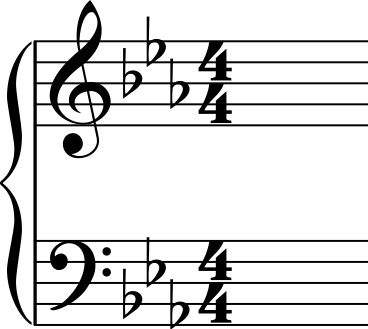


The Complete Guide To Music Key Signatures
Key Signatures Sharps or flats stated right after the clef are called key signatures Every key signature has its own name The sharps or flats in the key signature affect all of the notes of the same letter name in the music For example, a flat written on the B line in the key signature means that all B's should be played as 'sHow about flat keys?Lesson 16 All the Major Key Signatures (Treble & Bass Clefs)All the Major Key Signatures in Treble & Bass ClefAll Major Key Signatures written on the Trebl


A Bit About Musical Notation


Lesson 8 Quiz
Start studying Major Key Signatures for Bass Clef Learn vocabulary, terms, and more with flashcards, games, and other study tools Eflat major Major key with 3 flats Aflat major Major key with 4 flats Major key with 7 flats THIS SET IS OFTEN IN FOLDERS WITH Major Scales 15 terms belandd Major Keys 15 terms TheGinger1214Here's the Eflat melodic minor scale on piano, ascending Here's the E flat melodic minor scale on the treble clef Here's the scale on the bass clef Learn how to build and play all types of scales Learn major and minor scales in all keys Here's a course I highly recommend for everyone who's learning to play piano and keyboardComplete this E major scale and draw the correct clef at the beginning Add the correct key signature Mark the following True or False Between F sharp and G sharp is a semitone E major scale has four sharps D sharp to E is a tone Complete this E major scale in the bass Mark the tones



Lesson 16 All The Major Key Signatures Treble Bass Clefs Youtube



Write The Following Scales With The Indicated Clef And Chegg Com
Common chord progressions in the key of E flat major are as follows I – IV – V (Eb – Ab – ) I – vi – IV – V (Eb – Cm – Ab – ) ii – V – I (Fm7 – 7 – Ebmaj7) Here's a diagram of the E flat major key signature and the notes of the E flat major scale The E flat key signature has 3 flats, , Eb, and AbThe A major scale is In the treble, alto, and bass clefs, the G ♯ in the key signature is placed higher than C and generally Mozart was more likely to use clarinets in A major than in any other key besides Eflat major Moreover, the climax part of Tchaikovsky's Violin Concerto is also in A majorIf a composition is based on the notes of an E flat major scale, it is in the key of E flat major In written music, the key of a piece is represented by the key signature, which is a group of sharps or flats that are placed to the right of the clef Using a key signature accomplishes two purposes it indicates the key of the music, and it also takes the place of having to write every single accidental in front of notes


Q Tbn And9gctbwrnn33zdi380vzdom4vel00qjvf5fl8p9gfvvheqm19jjaqk Usqp Cau



The Complete Guide To Music Key Signatures
In this lesson, we learn how to play the E flat major scale This scale consists of the pitches E♭, F, G, A♭, B♭, C and D Its key signature has three flats, E♭, A♭and B♭ The relative minor of E flat major is C minor E flat Major Scale Intervals Tonic – The 1st note of the Eflat major scale is EbKey signature of E flat major scale The key signature of E flat Major has three flats (3♭) E flat Major scale in most common clefs Here is E flat major scale in most common clefs treble clef, bass clef, tenor clef and alto clef E flat Major scale in treble clef (Gclef) Below is the E flat major scale in treble clef E flat Major scale in bass clefEflat major key signature This step shows the Eb major scale key signature on the treble clef and bass clef The Eflat major scale has 3 flats This major scale key is on the Circle of 5ths Eb major on circle of 5ths, which means that it is a commonly used major scale key Eflat major scale has 3 flats



Eb Major Scale Treble Clef Page 1 Line 17qq Com



E Flat Major Scale All About Music Theory
Key signature of E flat major scale The key signature of E flat Major has three flats (3♭) E flat Major scale in most common clefs Here is E flat major scale in most common clefs treble clef, bass clef, tenor clef and alto clef E flat Major scale in treble clef (Gclef) Below is the E flat major scale in treble clef E flat Major scaleTonic – The 1st note of the Eflat natural minor scale is Eb Major 2nd – The 2nd note of the scale is F Minor 3rd – The 3rd note of the scale is Gb Perfect 4th – The 4th note of the scale is Ab Perfect 5th – The 5th note of the scale is Minor 6th – The 6th note of the scale is Cb Minor 7th – The 7th note of the scale is DbThe key of F has 1 flat That means the flat must be the first flat () All the other letter names are natural notes Now, starting on the root of the scale F, we can spell the key of F major — F, G, A, , C, D, and E As another example, the key of Ab major contains 4 flats It would use the first 4 flats of the order of flats — , Eb



Relative Major And Relative Minor Scales Music Theory Academy



E Flat Major Scale All About Music Theory
Key signatures of the bass clef can sometimes be more difficults to remember I guess because we tend to use the treble clef more, it's easier One thing that's helpful to remember is that on the staff, the sharps and flats begin one line down from the treble clefKey signature of B flat major scale The key signature of B flat Major has two flats (2♭) B flat Major scale in most common clefs Here is B flat major scale in most common clefs treble clef, bass clef, tenor clef and alto clef B flat Major scale in treble clef (Gclef) Below is the B flat major scale in treble clef B flat Major scale inIn some scores, the Cflat major key signature in the bass clef is written with the flat for the F on the second line from the top This can be seen, for example, in the Albéniz example given above Iberia , 1st movement "Evocación", about twothirds of which is in 7 flats, and every bassclef staff of which shows this variant



Basicmusictheory Com E Flat Harmonic Minor Key Signature


The E Flat Major Scale On Piano Treble And Bass Clef
Learning Outcomes By the end of this module, you should be able to (1) describe the diatonic set and understand how it is used to create major and minor scales, (2) sing major and minor using solfeggio (solfege) syllables, (3) explain the difference between natural, harmonic, and melodic minor, (4) spell major and minor scales starting on any note using accidentals in treble and bass clefThe Key Signature of E Flat Major Now that you know the E flat major scale, you also know the key signature of E flat major If the scale as 3 flats, the key does The key of E flat has 3 flats , Eb and Ab (The order of the first 4 flats spells the word BEAD, so we have the first 3 letters of the word here) Understand the Eb Chord fromE Major Scale On the Piano It's an excellent skill to be able to quickly and easily visualize scales on the piano The key to doing this is focusing on which white keys and which black keys are part of the scale Also, we have to keep in mind the two zones that make up each octave register on the keyboard Scale visualization for E major



How To Easily Remember All Key Signatures School Of Composition



1 1 Pitch
Here's a diagram of the E flat major key signature and the notes of the E flat major scale The E flat key signature has 3 flats, , Eb, and Ab Here's a diagram showing the Eb major scale on piano Further Reading Major and Minor Key Chords Piano Chords Charts My best recommendation on this site for piano lessons is Piano For AllIdentify the Major key signature Use a letter name only Example E, E flat, etc Learn with flashcards, games, and more — for free Search Create Log in Sign up Log in Sign up 30 terms klrosenbaum Major Key Signatures Treble & Bass Clef Identify the Major key signature Use a letter name only Example E, E flat, etc STUDYThe A flat major scale contains 4 flats the notes Ab, , Db, and Eb The scale of a piece of music is usually indicated by a key signature, a symbol that flattens or sharpens specific lines or spaces on the staff Instead of putting a flat symbol next to every single Ab, , Db, or Eb note, it's much easier to just place a key signature at the beginning of the music, which automatically flats each of those notes, so that the music conforms to the Ab scale



3 Major Scales



E Flat Major Scale Music Theory
For example, a B that is flat in the key signature which has a natural accidental, will need to be sharped as it is transposed, a G# If you're reading of the bass clef (as a bari sax might do), it's much easier Figure out the key, then pretend it's treble clef (a written C in bass cleff looks like an A in treble clef)Learn all the key signatures with this interactive key signature helper Covers treble, bass, alto and tenor clef All major and minor scales including harmonic and melodicIf the signature has flats, simply look at the note before the last That note tells you the key For instance, E flat major has three flats The note before the last is E flat The key is E flat The only exceptions to this rule are C since it has no sharps and flats, and F, since it has one flat
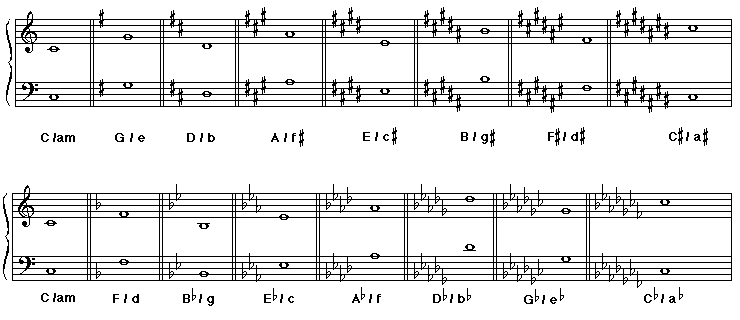


The Bass Clef Key Signatures At A Glance


The E Flat Minor Scale Eb Minor Scales On Piano Treble And Bass Clef Natural Melodic Harmonic Minor Scale
For flat key signatures, the penultimate flat (that's the one before the last) is the key name itself (Example When the flats are B flat, E flat, A flat and D flat, the key is A flat When the flats are B flat, E flat and A flat, the key is E flat) To get to the relative minor from any major key signature, count 3 half steps (semitones) downIn this lesson, we learn how to play the E flat major scale This scale consists of the pitches E♭, F, G, A♭, B♭, C and D Its key signature has three flats, E♭, A♭and B♭ The relative minor of E flat major is C minor E flat Major Scale Intervals Tonic – The 1st note of the Eflat major scale is EbThe Bass Clef Scales Here you'll find the bass clef scales the major scales with their key signatures Sometimes the bass clef can be more difficult to remember than the treble clef You'll find the scales with sharps in their key signatures first and scales with flats in their key signatures second



B Major Scale And Key Signature The Key Of B Major Youtube
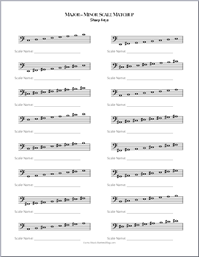


G Major Scale Key Signature Bass Clef Shakal Blog
Major Scale For Bass TAB Below you will find TAB for playing major scales with various common tonic notes The major scales shown below are in open position (ie played in the first 4 frets, often incorporating open (unfingered) strings E Major Scale Bass TAB – Open Position The notes in an E major scale are as follows E, F#, G#, A, BFor use in cryptography, see Key signature (cryptography) Key signature showing B ♭ and E ♭ (the key of B ♭ major or G minor) In Western musical notation, a key signature is a set of sharp ( ♯ ), flat ( ♭ ), or rarely, natural ( ♮) symbols placed on the staff at the beginning of a section of music The initial key signature in a piece is placed immediately after the clef at the beginning of the first lineThe key of A major is the only key where a Neapolitan sixth chord on ^ requires both a flat and a natural accidental The A major scale is In the treble, alto, and bass clefs, the G ♯ in the key signature is placed higher than C ♯


Http Www Yvhsmusic Com Wp Content Uploads 19 02 Bass Clef Scales Pdf
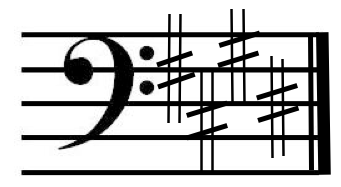


File E Flat Major On Bass Clef Png Wikimedia Commons



E Flat Major Scale And Key Signature The Key Of Eb Major Youtube


Major Key Signatures



Major Scales In Bass Clef Printable Pdf Download


Jazclass Reading Music 10 Key Signatures



B Flat Major Scale Music Theory


How To Read Music Chapter 3



Eb Major Scale Bass Clef In 21 Music Lessons For Kids Major Scale Music Chords
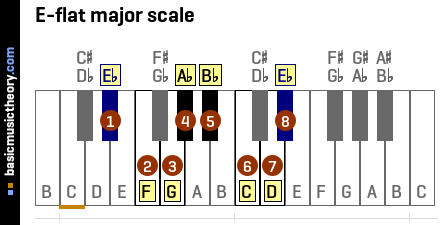


Basicmusictheory Com E Flat Major Scale



Can An Eb Bass Tuba Play In Both Treble And Bass Without Changing Valve Positions Music Practice Theory Stack Exchange
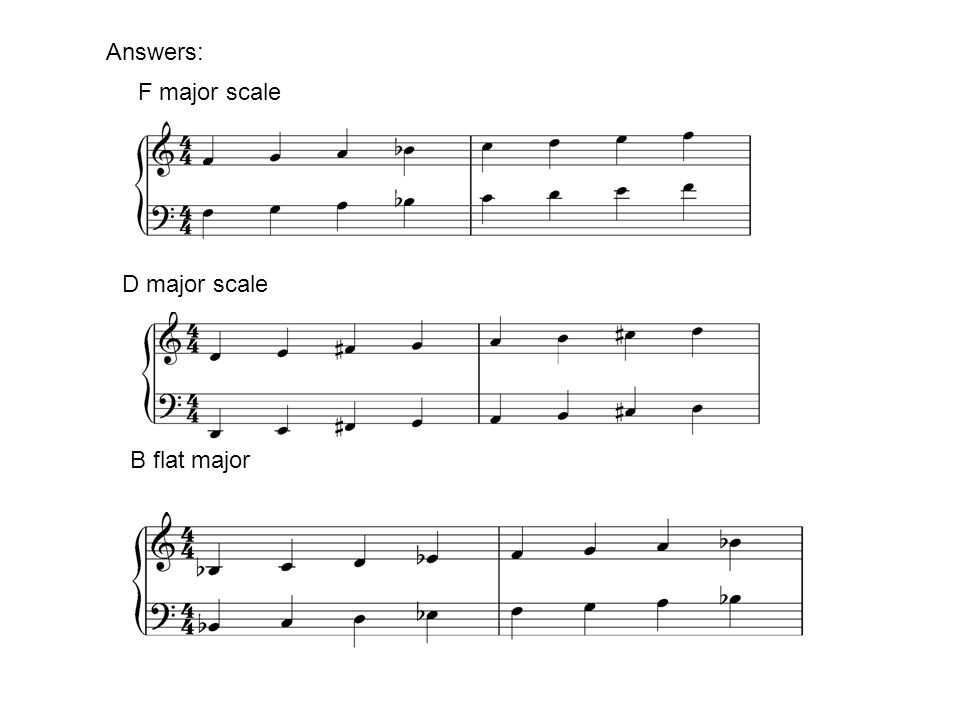


Scales Writing A Major Scale Without Using A Key Signature Ppt Download



An Introduction To Music Theory 5 6 Major Scales Having Key Signatures With Flats Openlearn Open University 24 1


8 Major Keys And Key Signatures Fundamentals Function And Form



Clefs Scales Key Signatures Ap Music Theory Blog



Scales Scale Degrees Dr Bove S Virtual Courses


Guitar Eku Edu Sites Guitar Eku Edu Files Files Eku music theory study guide 1 Pdf
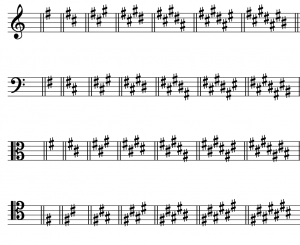


Major Scales Scale Degrees And Key Signatures Open Music Theory



Dolmetsch Online Music Theory Online Key Signatures And Accidentals
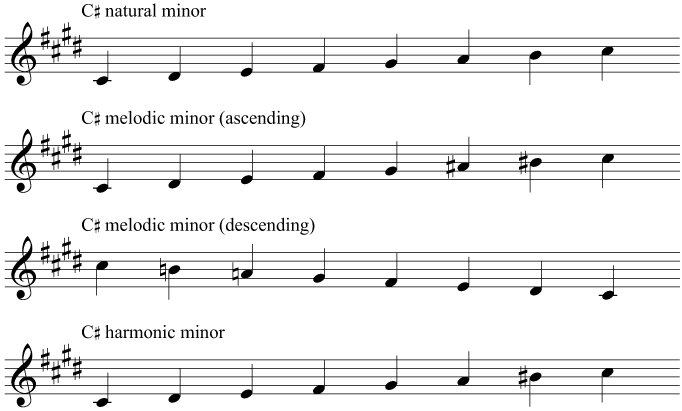


Study Keys Level 3



E Flat Major Scale All About Music Theory


Basic Triads In Major Keys Open Textbooks For Hong Kong



Learn How To Read Sheet Music Notes For Music Take Note



Eureka Springs School Key Signature And The Circle Of 4th 5ths



مساهم الفعلية التغذية B Flat Major Scale Treble Clef Ledergerber Treuhand Com



Cello Online Scales Two Octave Major Scales



Chords Progressions Bass Clef By Bower Bugs Qpress



E Flat Major Scale All About Music Theory



How To Easily Remember All Key Signatures School Of Composition


The B Flat Major Scale How To Play Form


He Kendallhunt Com Sites Default Files Uploadedfiles Kendall Hunt Content Higher Education Uploads Gerhold 2e Chapter6 Pdf
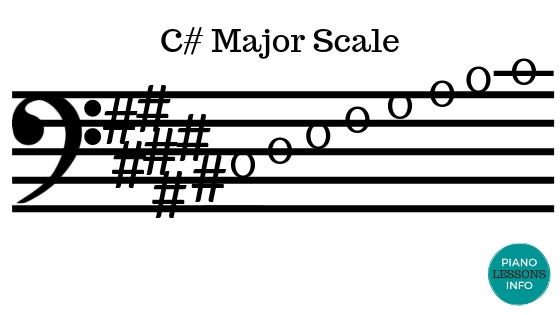


Bass Clef Scales Major Scales



G Major Scale Key Signature Bass Clef Shakal Blog



E Flat Major Scale Music Theory
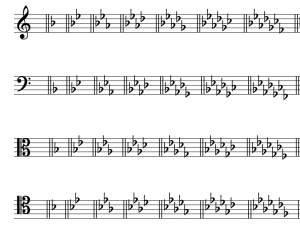


Major Scales Scale Degrees And Key Signatures Open Music Theory


Q Tbn And9gctrapk Xbx F 0mznxlvcx 40l63vm Lwdninkp5sqa54hbddkd Usqp Cau


3 1 5 Musical Notation Digital Sound Music


Treble Clef And Bass Clef Lecture And Notes Music Theory Default Term


How To Read Music Chapter 3


Key Signatures Open Music Theory


Key Signatures Open Music Theory
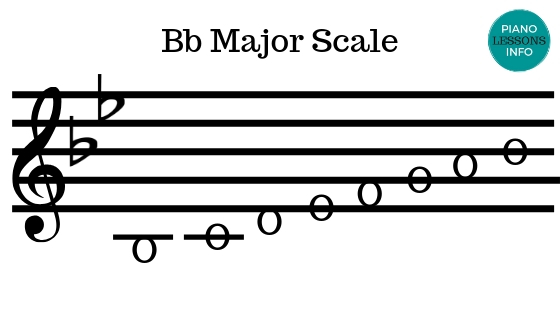


All 12 Major Scales



Eb Major Scale Treble Clef Page 1 Line 17qq Com



The Major Scales Treble Clef Music


The E Flat Major Scale On Piano Treble And Bass Clef



Key Signatures Music Theory Academy



Eureka Springs School Key Signature And The Circle Of 4th 5ths



E Flat Major Scale All About Music Theory
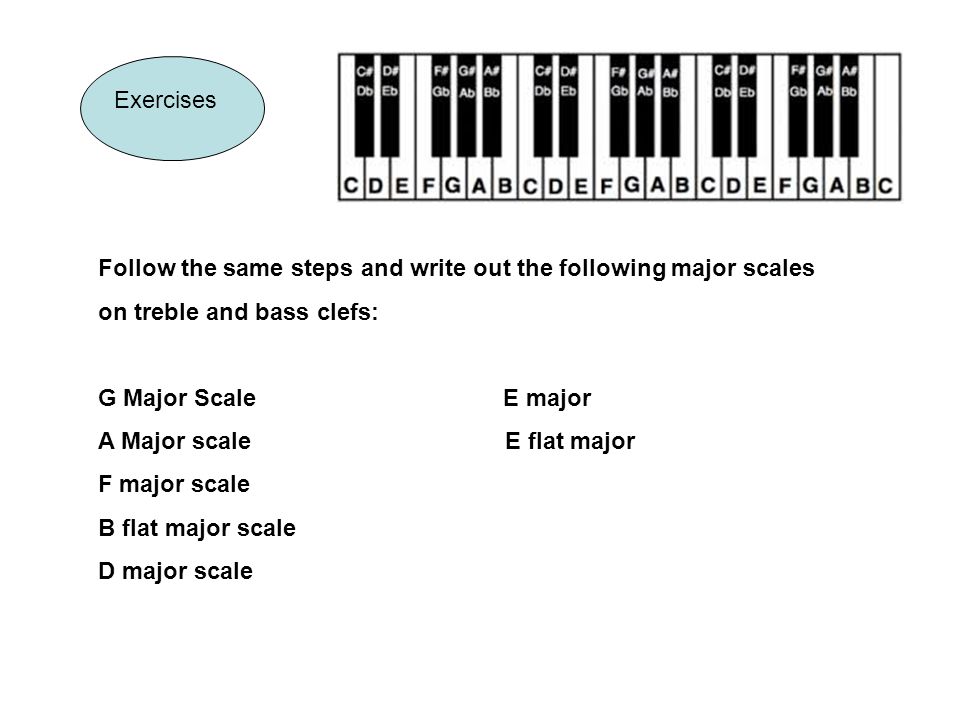


Scales Writing A Major Scale Without Using A Key Signature Ppt Download



Learn Major Scales Piano Treble Clef Charts Pattern Formula Chords Piano Chords Chart Piano Chords Piano Music



Learning The Major Chords How To Read The E Flat Major Chord



Key Signatures Explained Do Re Mi Studios


Major Key Signatures



A Major Wikipedia



How To Read Flat Key Signatures 7 Steps With Pictures Wikihow
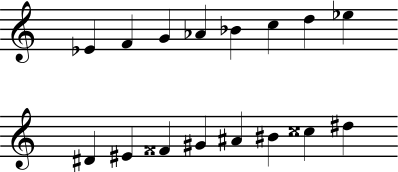


1 1 Pitch


Www Allstarbrass Org Download Audition Music Low Brass Baritone Trebie Clef Scales Baritone Tc Collection Pdf



Bass Clef Reading Flats And Sharps In Key Signatures Flashcards Quizlet



Basicmusictheory Com A Flat Major Key Signature



G Major Scale Without Key Signature Shakal Blog



How To Easily Remember All Key Signatures School Of Composition



Learn The 12 Major Scales Basic Music Theory



Music Piano Music Theory



Eb Major Scale Treble Clef Page 1 Line 17qq Com


Www Salvationarmycarolinas Org Assets Mediasources Musicandarts Assets Images Theory 6 Student Book Compressed Pdf
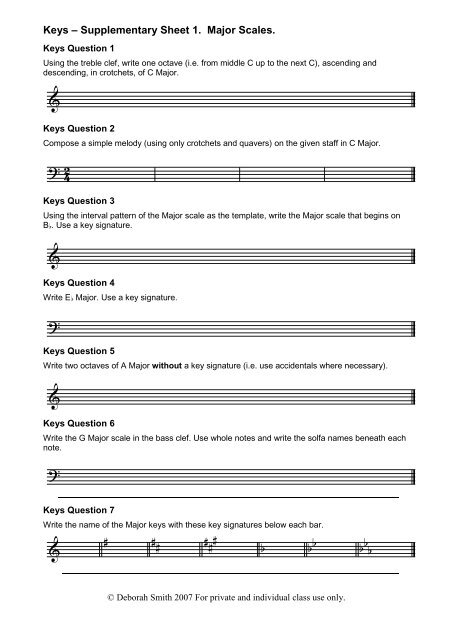


Keys Supplementary Sheet 1 Major Scales Deborah Smith Music


Uh Edu Tkoozin Theory1 Scaleex Pdf



Learning Major Scales A Complete Guide Hello Music Theory


8 Major Keys And Key Signatures Fundamentals Function And Form
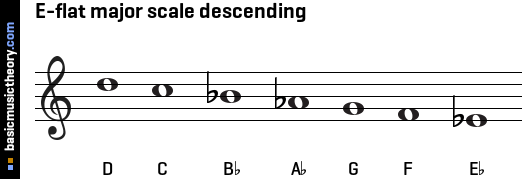


Basicmusictheory Com E Flat Major Scale


Lesson 16 All The Major Key Signatures Treble Bass Clefs



Harmonic Minor Scales Bass Clef Teaching Music Piano Lessons Singing


Q Tbn And9gctxnpsqxnvatfsw8oblol65tfyl7gb4mdsmtqqxvyc05oihbk E Usqp Cau



Dolmetsch Online Music Theory Online Key Signatures And Accidentals



The Order Of Sharps Music Theory Practice



Basicmusictheory Com E Flat Major Key Signature
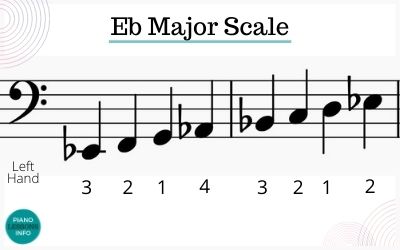


E Flat Major Scale On Piano Notes Fingering How To


コメント
コメントを投稿